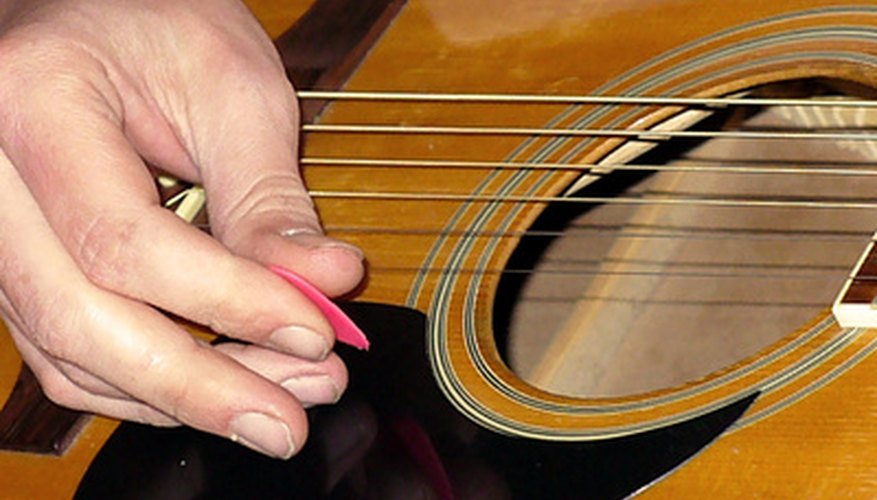One skill that guitar players need to know is how to tune a guitar. Guitars can go out of tune quite often, especially if you're hitting the strings hard or bending them a lot, if the strings are new or if there is a change in the weather like a quick, sharp drop in temperature. You can purchase a guitar tuner to tune your guitar, but if you don't have one, you can tune the guitar by ear. You can use this method when tuning a full-size guitar, a 3/4-size guitar or a 1/2-size guitar.
- One skill that guitar players need to know is how to tune a guitar.
- You can purchase a guitar tuner to tune your guitar, but if you don't have one, you can tune the guitar by ear.
Read the owner's manual for the guitar to learn the best tuning for your guitar. Standard guitar tuning is E-A-D-G-B-E, going from the sixth string (the thickest) to the first string (the thinnest). For a 1/2-size guitar, however, standard tuning is often A-D-G-C-E-A.
Blow into the hole on a pitch pipe labelled A. Play the sixth (thickest) string on the guitar, tuning it until the pitch of the string matches the pitch from the pitch pipe.
Place your finger on the sixth string just behind the fifth fret and play the string. This is a D note. Tune the fifth string on the guitar until the pitch matches the D note on the sixth string.
- Blow into the hole on a pitch pipe labelled A.
- Play the sixth (thickest) string on the guitar, tuning it until the pitch of the string matches the pitch from the pitch pipe.
- Tune the fifth string on the guitar until the pitch matches the D note on the sixth string.
Place your finger on the fifth string just behind the fifth fret and play the string. This is a G note. Tune the fourth string on the guitar until the pitch matches the G note on the fifth string.
Place your finger on the fourth string just behind the fifth fret and play the string. This is a C note. Tune the third string on the guitar until the pitch matches the C note on the fourth string.
Place your finger on the third string just behind the fourth fret and play the string (on this string, you use the fourth fret instead of the fifth fret). This is an E note. Tune the second string on the guitar until the pitch matches the E note on the third string.
- Place your finger on the fourth string just behind the fifth fret and play the string.
- Tune the second string on the guitar until the pitch matches the E note on the third string.
Place your finger on the second string just behind the fifth fret and play the string (go back to the fifth fret for this string). This is an A note. Tune the first string on the guitar until the pitch matches the A note on the second string.
